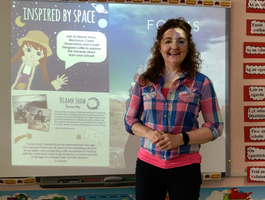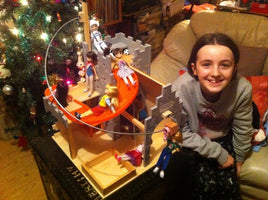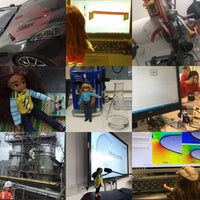It’s not a new concept. Great innovations like Alexander Gram Bell’s telephone and the Wright Brothers’ airplane came from using STEM. And now, in the Information Age, we have even more opportunities for STEM careers and advancements.
Progress has advanced in each of the four fields individually. But too often people focus on one subject while ignoring the others. STEM is “greater than the sum-of-its-parts” instead. Its effectiveness increases overall when exploring and learning work together in multiple branches. And this integrated process has practical uses in the real world.

Unfortunately, education is only slowly catching up. Educators are intimidated from a lack of understanding engineering and technological fields. Good curriculum to teach the integrated concepts is not widespread. And children are still being left behind.
But, education doesn’t end in the classroom. Effective learning benefits from play and exploration through games and toys. Children exposed consistently to STEM have a greater advantage in combining imagination with reality. This carries forward with them in life, especially if they enter a STEM field as a career. Studies show STEM education and immersion increases analytical and critical thinking. It also contributes to heightened skills in problem solving.

This is especially important for girls. Studies have shown that STEM field persistence is more likely in girls encouraged and mentored in STEM from an early age. Boys often tinker and enter the fields by themselves innately. But unsupported girls might not have their interest piqued until university level, putting them at a great disadvantage. This lack of support, even discouragement, has contributed to a gender gap in STEM fields.
Become a Lottie Super Fan!
- Be the first to hear about new Lottie Dolls
- Help to inspire the latest Lottie Dolls & accessories
- Suggest new ideas & activities you'd love to see
- Take part in exclusive launch team competitions
*Unsubscribe at any time!
The biographies of many famous scientists and mathematicians show that they became interested in STEM areas as children. American mathematician Katherine Johnson (1918–2020), for example, loved and excelled at mathematics from young age. A high school graduate at age 14, she went on to graduate summa cum laude from college at 18. Overcoming gender and racial obstacles as an African American woman, Johnson was invaluable to the NASA space program. She calculated trajectories and launch windows, as well as orbits, relied upon by astronauts Alan Shepard and John Glenn. Her achievements were dramatized in the 2016 movie Hidden Figures.
![]() Fast Shipping
Fast Shipping![]() Subscribe to our Newsletter
Subscribe to our Newsletter![]() 🌟 New Global Competition 🌟
🌟 New Global Competition 🌟


















